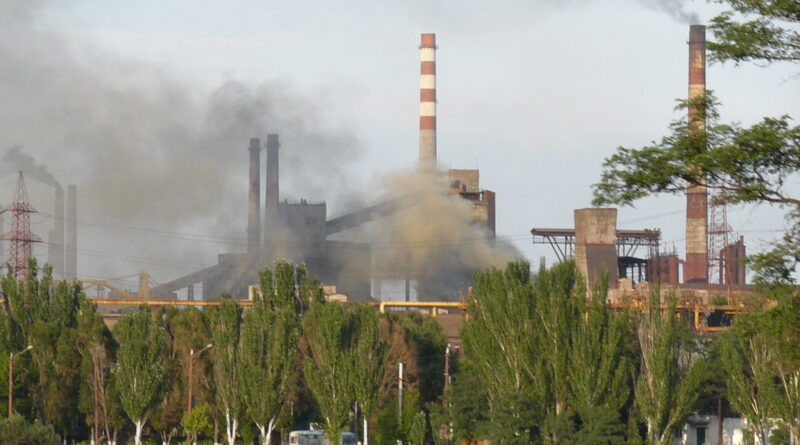Azovstal no longer produces steel, nests last Mariupol resistance
Mariupol’s Azovstal Iron and Steel Works has always played a dominant role in the port city’s economy but it became a key battleground in Ukraine. As one of the largest steelworks in Europe, it pumped out more than 4 million tons of crude steel annually and provided livelihoods to tens of thousands of people.
The works include coke oven battery production, a sinter plant, six blast furnaces and a sprawling steel-making complex with oxygen converters and electric arc furnaces.
But now, amid a Russian-barbaric war and a weeks-long siege by Putin’s forces, the sprawling industrial complex is no longer producing steel. Instead, the plant and its network of underground tunnels are serving as a shelter and final holdout for thousands of Ukrainian fighters, including many from the Azov Battalion.
As many as 1,000 civilians are also hiding there in the subterranean network.
By 16 April, it became the last pocket of organized resistance in the siege. Russian forces gave the defenders until 6 am Moscow time on 17 April to surrender themselves. Russia claimed if they left behind their weapons they would guarantee their lives. Ukrainian forces refused to surrender and portions of the plant remained under their control.
A second ultimatum of the Russian defense ministry for Ukrainian troops to withdraw ‘without exception, any weapons and ammunition’ between 11 am and 1 pm GMT on April 19 was ignored by the Ukrainian forces as well.
Azovstal was originally constructed in the early Soviet era and was later rebuilt after the Nazi occupation of Mariupol between 1941 and 1943 left it in ruins. It now occupies ten square kilometres along the city’s waterfront.
Under the city, there is basically another city – the site was designed to withstand bombings and blockades — and that it has an inbuilt communication system that strongly favors the defenders, even if they are far outnumbered.
Local officials said April 18 that as many as 1,000 civilians are hiding in underground shelters beneath the Azovstal steel plant in Mariupol, Ukraine.
But if Russia were to take the steelworks, it would be a much-needed victory for the Kremlin.
Mariupol, with a prewar population of about 450,000, is one of the last urban areas of Donetsk that is not fully under Russian control. Capturing it would give Russian forces a land bridge between Russia and Crimea, the peninsula it annexed from Ukraine in 2014.
Azovstal and similar sites in the city are also prime examples of why Donbas and its industrial heritage are so important for both Ukraine and Russia. Mariupol is Ukraine’s second-largest port city, and before comprehensive Western sanctions, Russia had a booming steel sector that was valued as the fifth largest in the world.
Donbas is known best for its coal, but Mariupol also had a profitable metal industry. Roughly 40,000 residents were employed at Azovstal and another nearby steelworks owned by the same company, Ilyich Iron and Steel Works, according to Ukrainian steel giant Metinvest.
Together, Azovstal and Ilyich accounted for roughly one-third of Ukraine’s crude steel production in 2019, according to tracking from the analyst group GMK Center. That year, steel and related industries contributed 12 percent of Ukraine’s gross domestic product.
Production at the site began in 1933, but less than a decade later Mariupol was overrun by German troops during World War II, and works were halted amid a dramatic exodus of civilians from the city.
But by 1944, just one year after the occupation ended, work was already underway to rebuild the plant, which soon became a productive and profitable part of the Soviet steel industry.
Seventy years later, steelworkers from Azovstal organized to forcefully retake Mariupol from pro-Russian separatists in 2014. The resistance — in a city where a majority spoke Russian and had often voted for politicians friendly to Moscow — surprised many observers.



